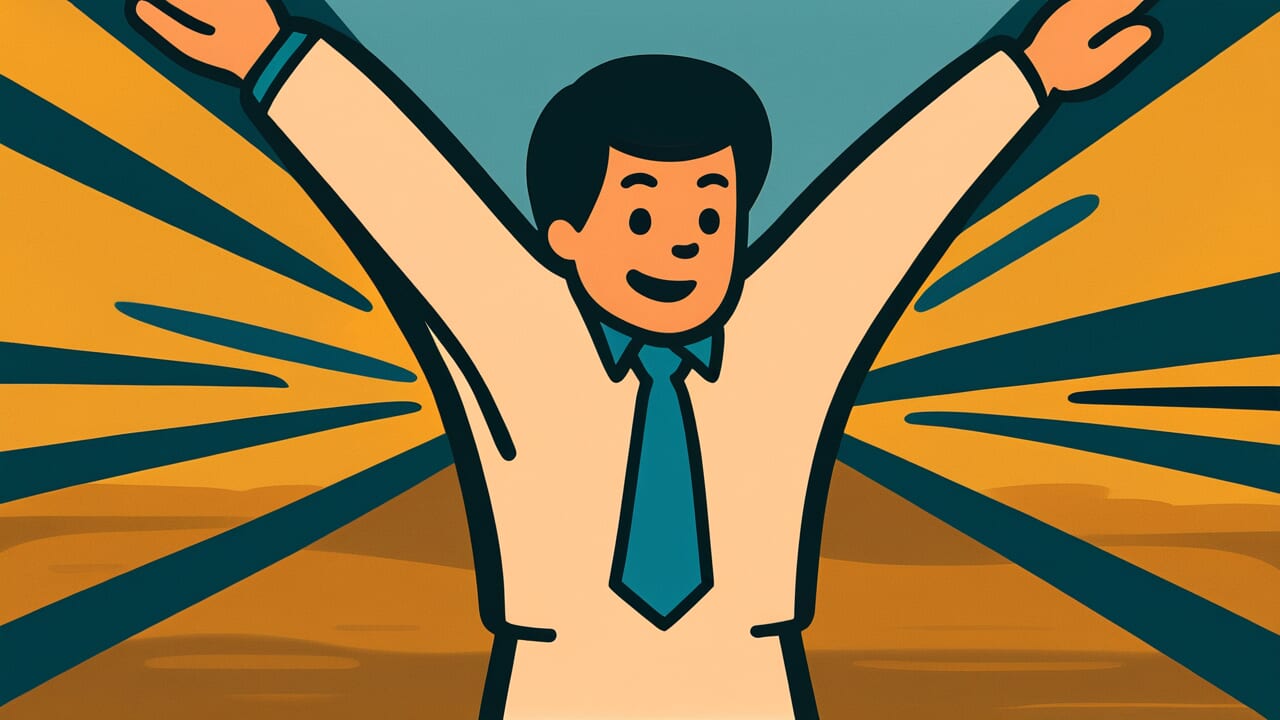How to Read “Doing a handstand rather than mediating”
Nakadachi yori sakadachi
Meaning of “Doing a handstand rather than mediating”
This proverb means that mediating between people is harder and more exhausting than doing a handstand.
When you try to settle a fight or conflict between two sides, you face unexpected challenges. Both sides complain to you. You get caught in the middle trying to satisfy everyone.
People use this saying when someone is about to take on a mediator role. They also use it to acknowledge someone struggling with mediation.
For example, you might say, “Getting those two to make up? That’s doing a handstand rather than mediating.” This emphasizes how difficult mediation really is.
The proverb uses handstands because everyone knows they’re hard. This makes the point clear: mediation looks like simple conversation, but it’s actually much harder.
Anyone who has mediated at work, home, or among friends understands the weight of these words.
Origin and Etymology
The exact first written record of this proverb is unclear. However, its structure suggests it was already used during the Edo period.
The expression combines two contrasting words: “nakadachi” (mediation) and “sakadachi” (handstand). This pairing shows the common people’s creative thinking.
Mediation means stepping between people in conflict. You listen to both sides, make adjustments, and guide them toward reconciliation.
This sounds noble and important. But in reality, both sides complain to you. You get squeezed between them. The mental and physical strain is enormous.
A handstand means supporting your body upside down on your hands. It’s like a circus trick. This is certainly not easy either.
But at least a handstand is your own problem. You don’t get pulled around by other people’s emotions and interests.
The proverb compares these two difficulties brilliantly. It makes the invisible struggle of mediation visible by comparing it to a physical challenge everyone can imagine.
The saying declares that doing a handstand is actually easier. This reflects the real experience of people who have tried mediation.
This is wisdom born from ordinary people’s lives. It contains both humor and irony.
Usage Examples
- Mediating that couple’s fight is doing a handstand rather than mediating, so nobody wants to take it on
- I was assigned to coordinate between the director and manager, but it’s truly doing a handstand rather than mediating—my stomach hurts every day
Universal Wisdom
The difficulty of mediating human relationships is a universal truth across all times and places. Why is mediation so hard? Because humans are emotional creatures.
Two people in conflict each have their own sense of justice. Each has their own arguments. If the mediator seems to favor one side even slightly, the other side reacts with fierce opposition.
If you try to stay completely neutral, both sides criticize you. They say, “You don’t understand anything.”
What happens after the conflict is resolved is even trickier. The two people who made up return to their normal relationship.
But the mediator alone gets kept at a subtle distance by both. Seeing the mediator’s face reminds them of the conflict. This becomes “much ado about nothing.”
Still, people step in to mediate. Why? Because humans are social creatures. We have an instinct to seek harmony.
We cannot ignore conflict right in front of us. A sense of duty drives us to bridge the gap, even knowing the difficulties.
This proverb recognizes and honors the mediator’s struggle. By comparing it to handstands, which everyone agrees are difficult, it makes invisible mediation struggles visible.
It tells society about the value of this hard work.
When AI Hears This
The human body has about 2000 kilocalories of energy to use each day. This amount is limited. Doing a handstand is physical exercise using muscles, so we can measure calories burned.
Ten minutes of handstands burns about 50 kilocalories. What about mediation? Adjusting human relationships also makes the brain work at full capacity, consuming considerable energy.
Research shows that complex negotiations and interpersonal adjustments use over 100 kilocalories per hour just for the brain.
What’s interesting is that mediation has enormous “hidden costs.” There’s time spent listening to both sides. There’s cognitive load from reading emotions.
There’s relationship risk if you fail. In economics, this is called opportunity cost—”what else you could have done with that time.” Considering this, mediation costs dozens of times more than handstands.
If mediation fails, you receive “negative energy” from being resented by both sides.
The law of energy conservation in physics teaches that “energy only changes form, the total amount stays the same.” Human behavior choices work the same way.
Where do you invest your limited energy resources? Compared to mediation, which is high-risk with uncertain returns, handstands are self-contained with clear results.
From an energy efficiency perspective, handstands are more rational. Our brains calculate this instantly.
Lessons for Today
This proverb teaches modern people that some problems cannot be solved with good intentions alone. Wanting to help someone or stop a fight is admirable.
But mediation requires appropriate resolve and skill.
In modern society, we face more situations requiring coordination at work and home. However, jumping into mediation carelessly can make things worse or exhaust you.
First, calmly assess whether you have the ability to mediate.
If you do mediate, avoid half-hearted involvement. Ask yourself: Do you have time and mental space to hear both sides completely? Can you respond without getting emotional?
You also need mental preparation to accept that not all mediation succeeds.
On the other hand, this proverb teaches respect for those who mediate. If someone around you is handling difficult coordination, understand their struggle.
Give them words of gratitude. Recognizing invisible effort becomes the power that supports them.



Comments